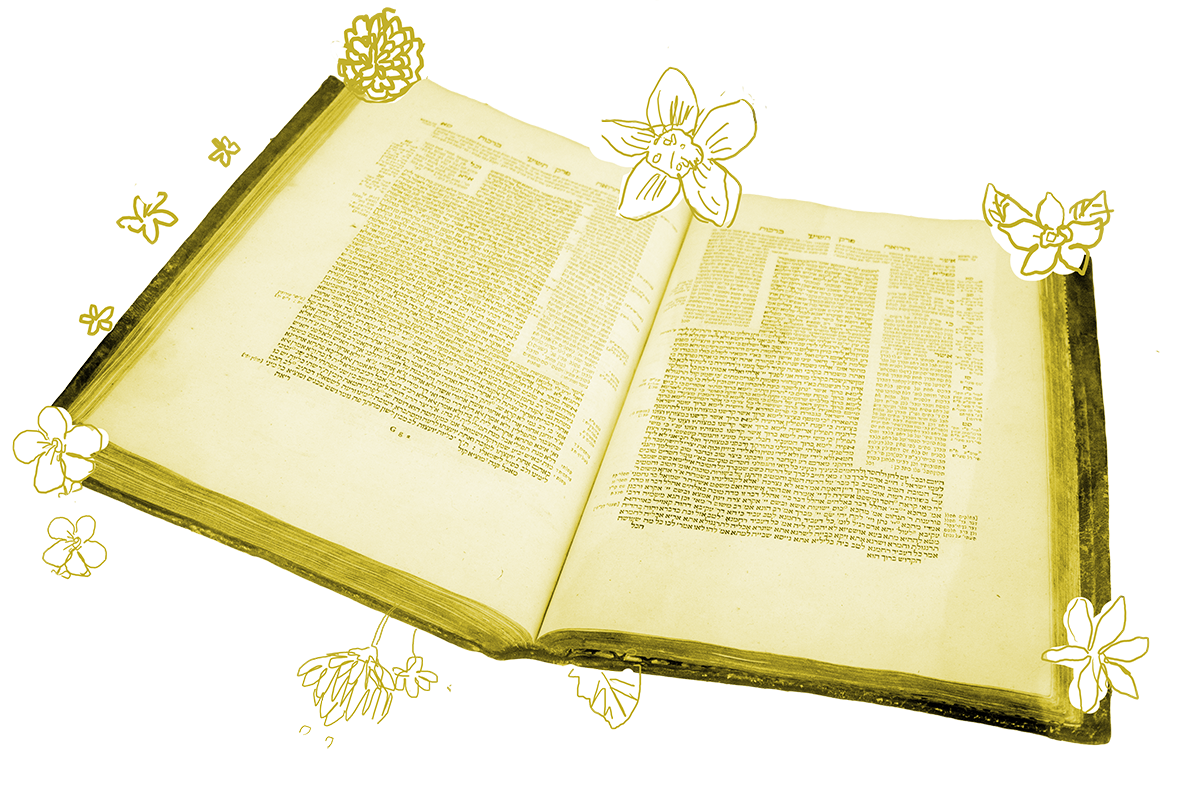In the Gemara today, we are deep into a discussion of appropriate s’chach (roofing material) for the sukkah. We learned in a mishnah that bundled materials are inappropriate, as the branches should be loose and scattered (though the Gemara accepts “naturally” bundled material, so you don’t have to physically rip palm branches apart). Plants that smell bad or that are liable to flake apart and fall into your food are also forbidden because though the sukkah is temporary, it is supposed to be comfortable — a place people will really spend time. There’s also a concern about roofing that is susceptible to impurity, which is why food species are not considered acceptable unless the majority comes from the inedible part of the plant. So you can have clusters of grapes as part of your s’chach, but only if the majority of the roofing is the woody vines holding those grapes (which actually sounds lovely in every way).
All of this, however, is briefly interrupted by an interesting side conversation about maror — the bitter herb that is eaten at the Passover meal. If you joined us for Tractate Pesachim, you may recall that while the Torah requires us to eat a bitter herb on Passover, it does not specify the species, and the rabbis believed many different kinds of plants could fulfill this requirement.
On today’s page, the Gemara revisits this idea. Rav Hisda and Ravina bar Sheila assert that one can fulfill the obligation to eat bitter herbs with “bitter herbs of the marsh.” But the Gemara is immediately concerned that this is the wrong species. After all, when the Torah gives a commandment about hyssop, the rabbis reason, we do not use “Greek hyssop” or “Roman hyssop” or “desert hyssop” or any kind of hyssop that is preceded by a modifier — we just use standard hyssop. Maybe, then, this is also true for bitter herbs?
Abaye comes in to correct this notion. Desert hyssop might not be permitted when the Torah only says hyssop, but any kind of bitter herbs, including the very specific “bitter herbs of the marsh,” is acceptable at a Passover seder. Why?
With your help, My Jewish Learning can provide endless opportunities for learning, connection and discovery.
Every species whose name was differentiated prior to the giving of the Torah, and the Torah then came and was particular about one specific subspecies, it is known that the species has (other subspecies identified with) a modifier. And these bitter herbs, their names were not differentiated prior to the giving of the Torah at all.
According to Abaye, when the Torah was given, human beings had a limited understanding of botany. They knew about many species — but not necessarily all of their subspecies. This applied in particular to bitter herbs; all the subspecies were as yet unknown. Therefore, the Torah simply required people to eat “bitter herbs.” It did not talk about “bitter herbs of the marsh” because people back then would not have known what that was.
What strikes me about this text goes far beyond the botany lesson. The sui generis rabbinic art of midrash attests to the idea that the words of Torah are of unending value, giving us inalterable commands and also yielding new meanings to each generation that studies them deeply. But Abaye’s remark about bitter herbs unabashedly acknowledges the Torah as a product of its time, written in language tailored to the generation that received it. If you find yourself wondering if the rabbis had any sense of the Torah as an historical document, I would argue that this text provides some evidence that they did. In the rabbinic view, this doesn’t make Torah any less sacred, but it does mean that later generations need to do more work to understand it.
Read all of Sukkah 13 on Sefaria.
This piece originally appeared in a My Jewish Learning Daf Yomi email newsletter sent on July 20th, 2021. If you are interested in receiving the newsletter, sign up here.



